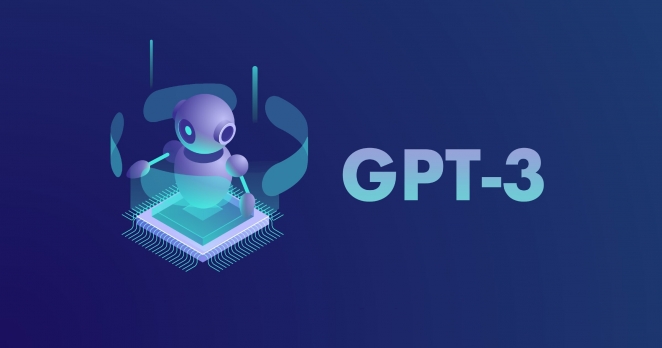Up till now, Artificial Intelligence (AI) within the world of marketing has largely been centred around using algorithms to make decisions or analyse data. Now, however, we are seeing real breakthroughs in AI successfully performing jobs that humans have usually been adept at.
Driving this paradigm shift is GPT-3 – a machine learning system that requires little human instruction and can process a vast amount of data to generate human-passing content on an industrial scale. GPT-3 has many benefits, one being the ability to automatically create text at a rate faster than humans can think, or type, but its key benefit to marketers is actually the staggering range of tasks the system can complete. This capability has the potential to transform the way content is created.
GPT-3 was initially developed to predict the next word in a sentence, the latest incarnation of Natural Language Generation tools, but almost accidentally its skills have become a lot more general. It can now be used to help code, answer questions, and replicate human conversation.
This is because GPT-3 uses neural networks, a set of algorithms designed to find mathematical patterns in data, learning from the data available to it and adapting to new information and corrections. GPT-3 uses these to learn new and varied skills by mimicking the patterns within the 45 terabytes of digital prose it has been trained with.
Using this framework, the content that GPT-3 can create is incredibly varied: skilled at creating concise summaries of complex issues, generating multiple versions of marketing copy, powering customer service chatbots, and structuring thought pieces like this one (but I am a human being, honest!).
As such, the opportunities presented by GPT-3 are almost limitless and largely determined by how much creative freedom you give the algorithm - where ‘creativity’ refers to how mathematically predictable or random you want your output to be. This creativity allows you to ask GPT-3 for genuinely original content, like a short story involving the Spice Girls, a crossword puzzle, and a spaceship.
While marketing has made some inroads into the commercial use of AI, many have not begun to explore its full potential – particularly when confronted with the idea of theoretically complex technology like GPT-3.
How marketers can tap into AI

The possible uses of generative AI are at once apparent: producing whole paragraphs of copy, creating content that is optimised for Facebook ads, churning out emails and snappy product descriptions, identifying the core themes that are driving positive and negative sentiment, and even writing code.
The common reaction to the idea of AI attempting historically human tasks is generally negative – with copywriters concerned that it would make many of their day-to-day tasks redundant and directors concerned that it would undermine the creative process.
However, we have been experimenting with GPT-3’s abilities using LUCA, Unlimited’s innovative new human insights platform that automates the gathering and analysis of digital data sources. We believe that there are huge opportunities for AI in marketing and have already used it to examine challenges within customer experience.
From rapidly automating search engine optimisation (SEO) to summarising trend reports; from writing news stories to creating multiple variations of ad copy, GPT-3 is already capable of solving many of the practical challenges the industry currently faces. It’s limited only by the creativity of the instructions we can think to give it.
GPT-3 in practice: automation and data analysis

GPT-3 can save marketers a lot of time by generating several different adverts that can be used for different platforms. For example, if you feed AI systems the instructions to write a creative ad for a product, giving it a brief description of said product and its sales materials, the AI can generate ten human passing versions of that advert that are best suited to the parameters of Facebook advertising.
Marketers can also add as many details as they can think of, specifically requesting language that appeals to users in a way that celebrates the linguistic and tonal nuances between people. GPT-3 can communicate just as effectively with Gen-Z as it can with a CFO.
GPT-3 functionality can also be used to produce powerful summaries of verbose and dense trend reports, extracting the key concepts and opinions. This allows for easy consumption of the most crucial sections so that public relations (PR) teams can quickly and painlessly implement important findings and cutting edge thought leadership into their strategic planning.
To GPT-3 or not to GPT-3?

Given the almost science fiction nature of adapting to the presence of an AI colleague, and the varied range of tasks that GPT-3 has been able to complete, it is easy to see why it would feel like a threat to marketers. However, GPT-3 is not a perfect tool.
At the centre of all criticism regarding generative AI is its definite need for a human guide. The content that it creates is not perfect and often needs to be altered and amended throughout its process to ensure its output is legible and human-sounding. Like any new piece of technology, sometimes it will malfunction or misunderstand a command and produce nonsense.
Despite these issues, the point remains that GPT-3 can provide an important value add, able to help rather than hinder our work. We think that the main advantage is efficiency; freeing up time for strategists to work on more creatively satisfying and higher value projects, leaving the AI to churn out commodified writing of endless and repetitive ad lines and copy, or helping PR professionals to distil the essence of great ideas quickly to speed up the publishing of press releases.
GPT-3 is not an attempt to replace people, but instead provides a valuable addition to the workforce, taking care of mundane tasks and allowing people to focus their attention on effective curation and creative direction.
By Dr Simon Collister, Human Understanding Lab Director at UNLIMITED Group
Header image by Piotr Albrecht






